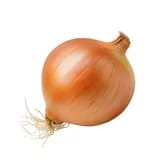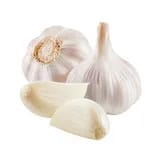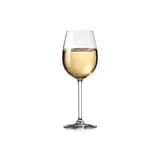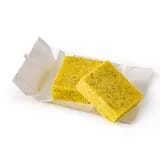Creamy Caramelized Onion Rigatoni
390 reviewsCreamy caramelized onions give this pasta dish a warm hug :-)

Ingredients
Utensils
Stovetop, Pot (small)
recipe

Step 1
Peel & thinly slice the onions.


Step 2
Melt a knob of butter in a saucepan over low heat. Add the onions and grated garlic. Salt and pepper, then brown everything for 12 to 15 minutes, mixing.

Step 3
Deglaze with white wine. Mix until absorbed.

Step 4
Add the stock cube and hot water (200 ml of water per person). Mix and bring to a boil.

Step 5
Add the pasta. Mix and cook for the time indicated on the package.


Step 6
A few minutes before the pasta is finished cooking, add the semi-thick cream and grated parmesan. Mix well.

Step 7
Serve the pasta onion soup style in a bowl or deep plate. Sprinkle with grated parmesan and chopped parsley, if you have any. It's ready!
Personal notes
Add your own flavor!
Nutrition facts
Average estimated amount for one serving
| Energy | 714 cal. |
| Fat | 32 g |
| Carbohydrates | 74 g |
| Protein | 20 g |
| Fiber | 6 g |
Values are based on an average estimate for one serving. All nutrition information presented on Jow is intended for informational purposes only. If you have any concerns or questions about your health, please consult with a health-care professional.
On average, one serving of the recipe "Creamy Caramelized Onion Rigatoni" contains 714 Energy, 32 g of Fat, 74 g of Carbohydrates, 20 g of Protein, 6 g of Fiber.
Price per portion
| € | Nos recettes à -2 € par portion |
| €€ | Nos recettes entre 2 € et 4 € par portion |
| €€€ | Nos recettes à +4 € par portion |
Please note, the price above is dependent on your grocer and the available products in the grocery store you chose.
Scores


C Nutri-score
The Nutri-score is an indicator intended for understanding nutritional information. Recipes or products are classified from A to E according to their food composition to promote (fiber, proteins, fruits, vegetables, legumes, etc.) and foods to limit (energy, saturated fatty acids, sugars, salt, etc.).
A+ Green-score
The Green-score is an indicator representing the environmental impact of food products. The recipes or products are classified from A+ to F. It takes into account several factors on the pollution of air, water, oceans, soil, as well as the impacts on the biosphere. These impacts are studied throughout the product life cycle.
Retrieving reviews...


